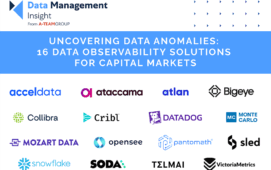A group of six banks and data vendors is working with Ethereum smart contracts to improve the quality of counterparty reference data through anonymous reconciliation. The blockchain initiative was borne out of the need to improve data quality for Markets in Financial Instruments Directive II (MiFID II) and Markets in Financial Instruments Regulation (MiFIR), and a pilot project is underway and due to be complete by the end of January 2018.
The project was initiated by UBS in its innovation and has been joined by Barclays, Credit Suisse, KBC, SIX and Thomson Reuters. Its intent is to reconcile the reference data of Legal Entity Identifiers (LEI) mandated for use under MiFID II and MiFIR, and streamline the LEI process for all participants.
Christophe Tummers, head of data at UBS, explains: “Traditionally, a firm such as ours quality checks data against multiple sources, but we do not have a quality baseline against peers. By using blockchain inspired smart contracts, the reconciliation of data can happen in almost real-time for all participants, anonymously.”
The Ethereum solution takes specific reference data for each legal entity and cryptographically conceals it at each institution using a process called hashing. The source data is held and remains within the participating institution. Only the hashed data is submitted, anonymously, to an Ethereum private blockchain powered by Microsoft Azure. The Ethereum smart contracts then reconcile the data against the consensus and provide each participant, via a user interface, the ability to search and view their own specific data in real-time. A user can then see where the anomalies lie in the data set and work to resolve those.
Robert Jeanbart, division CEO at SIX Financial Information, says: “MiFID II creates complex data management challenges for businesses. This initiative presents a unique opportunity for firms to benchmark content alongside their peers before it is used in regulatory reporting.”
Mark Davies, global head of RMS Data Services at Thomson Reuters, says: “This is a collaborative project that uses the latest blockchain technology to solve a real-world business challenge by improving the quality of counterparty reference data.” Emmanuel Aidoo, head of blockchain strategy at Credit Suisse, adds: “This is an important project as it establishes blockchain benefits in a broader context than clearing and settlement. The use of blockchain to solve regulatory requirements in a cost-effective way is very appealing.”
The project is a pilot phase in a mock-live environment using 22,000 non-sensitive LEI reference attributes for cash equity issuers. It is due to complete by the end of January 2018, with further, staged rollout dependent on the findings.
Subscribe to our newsletter




